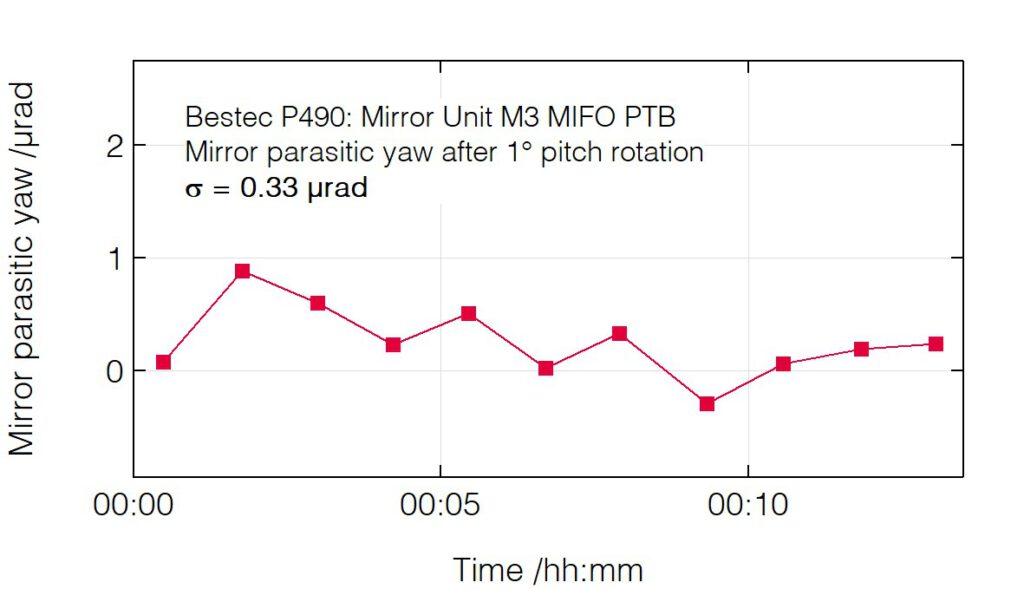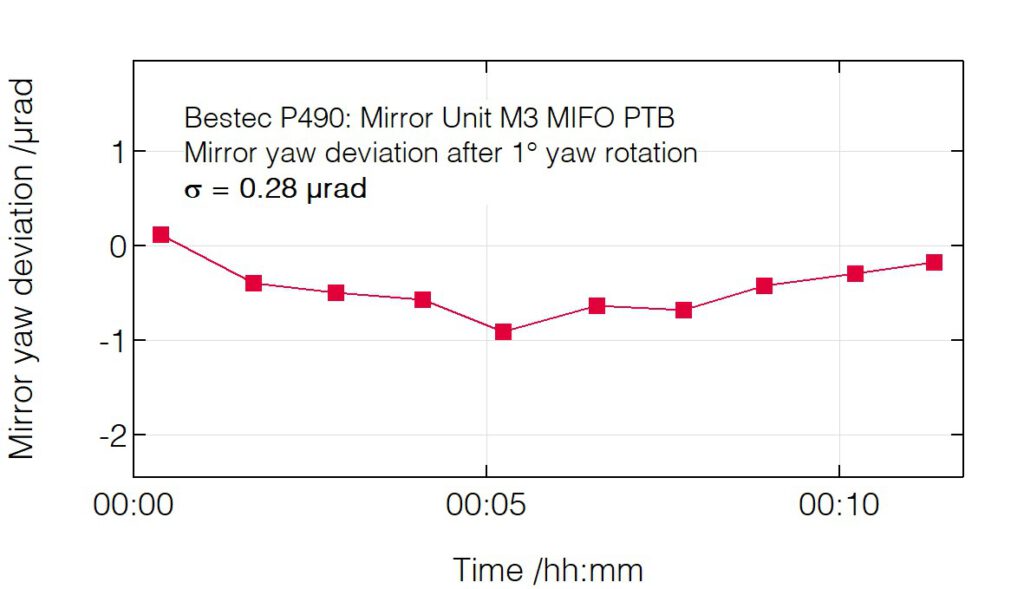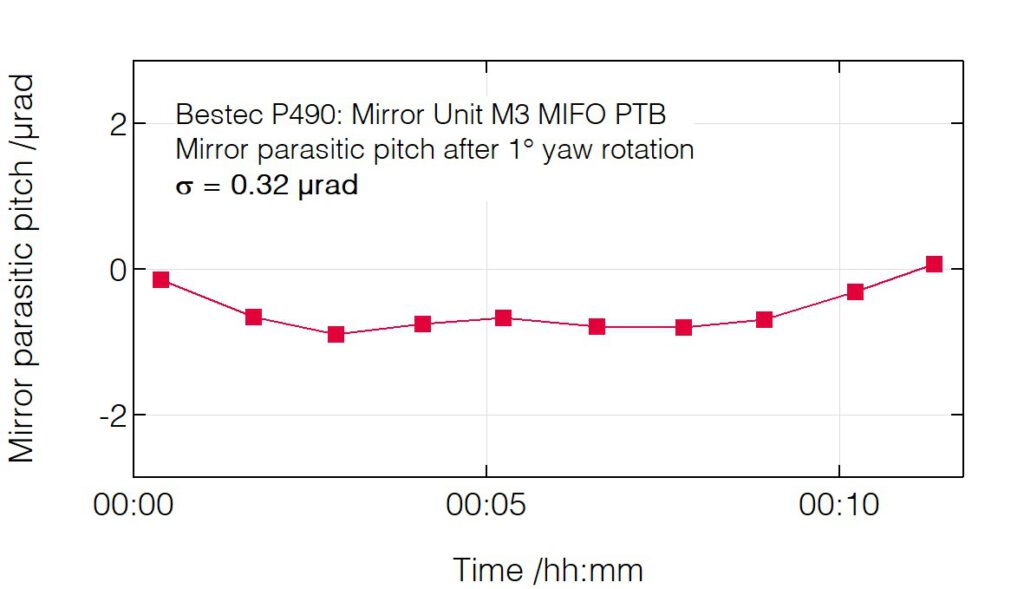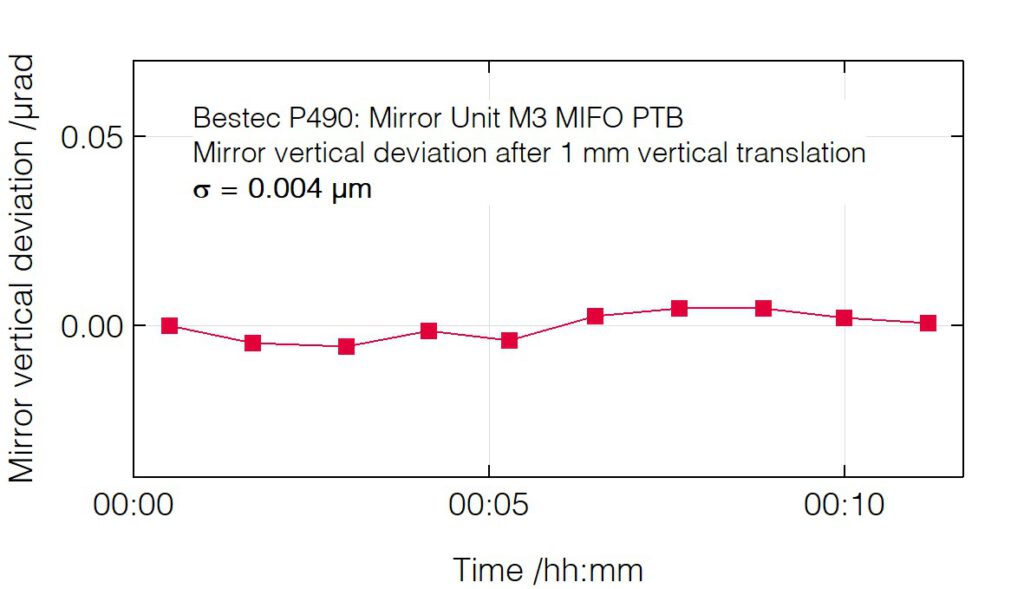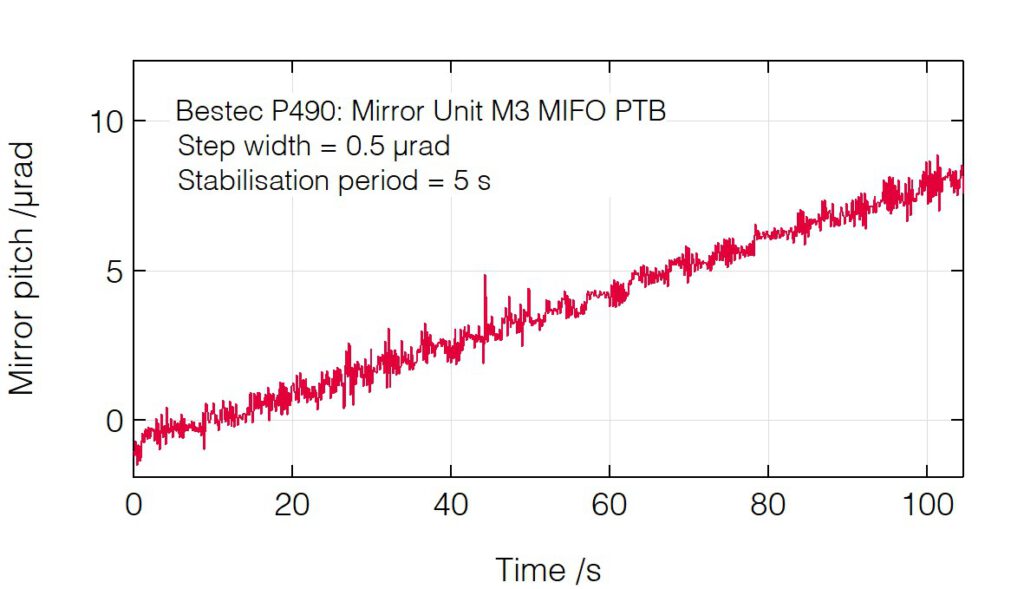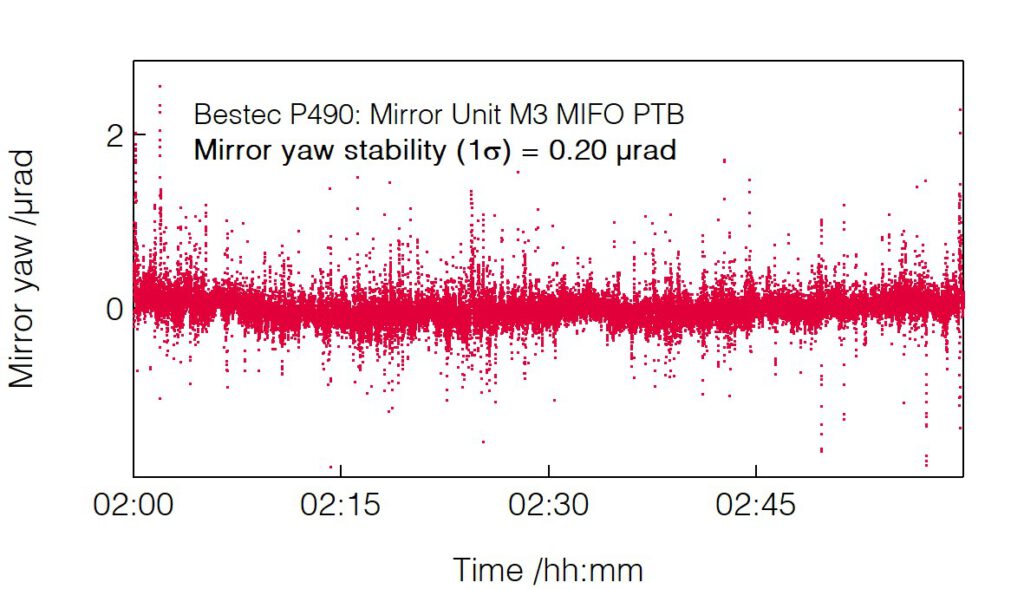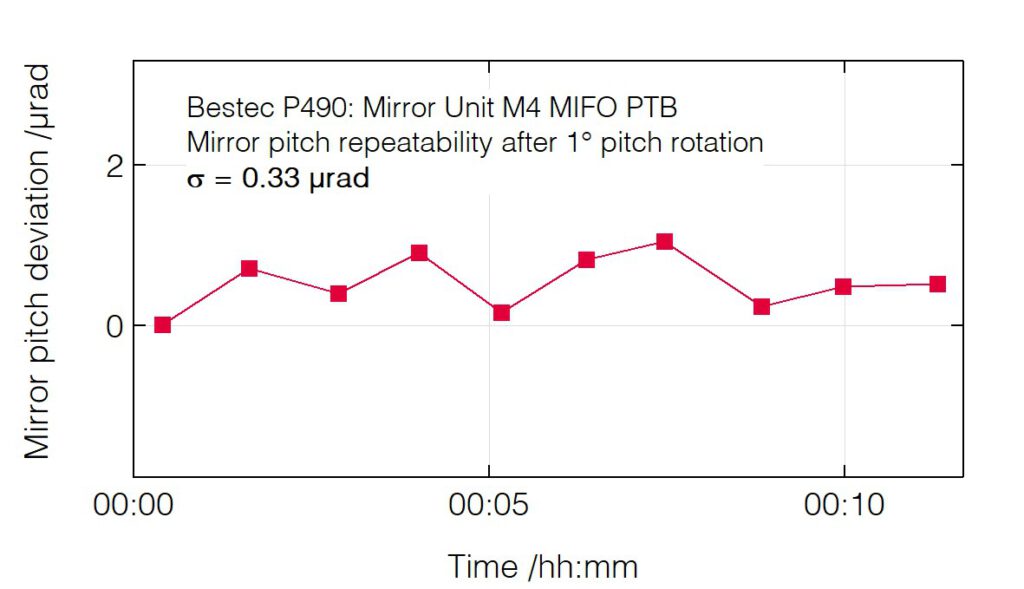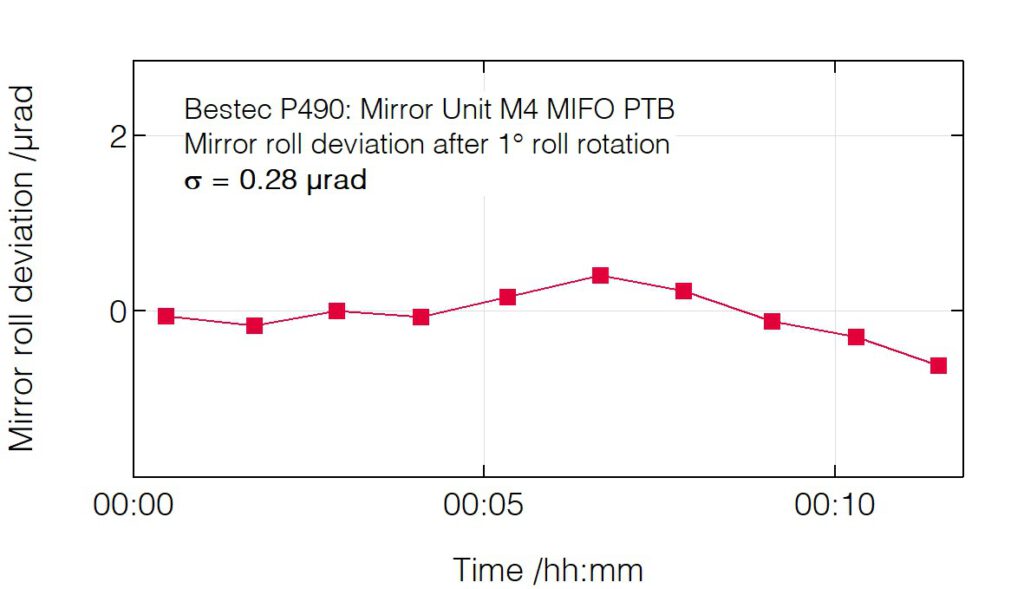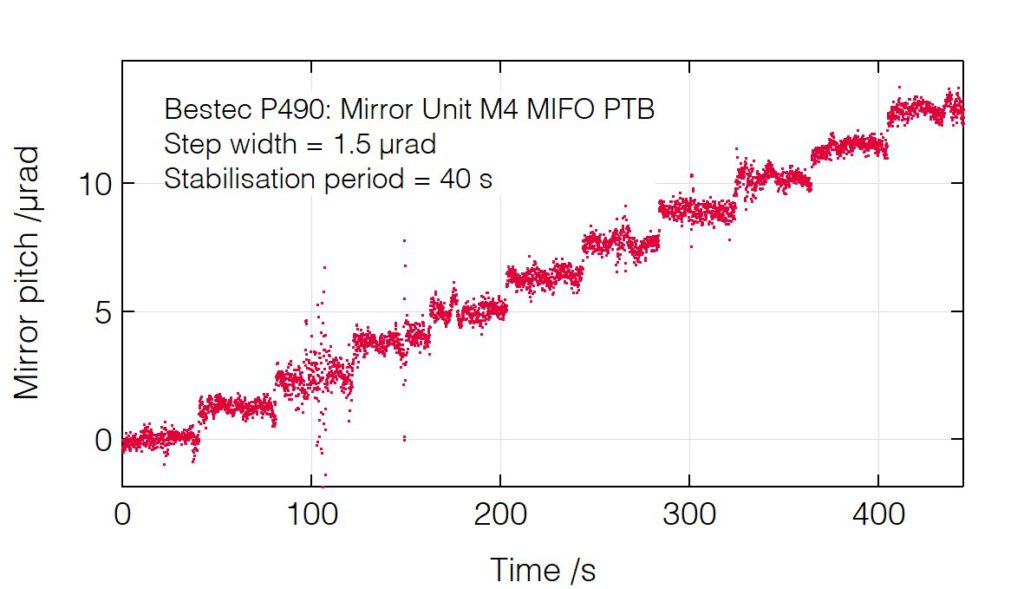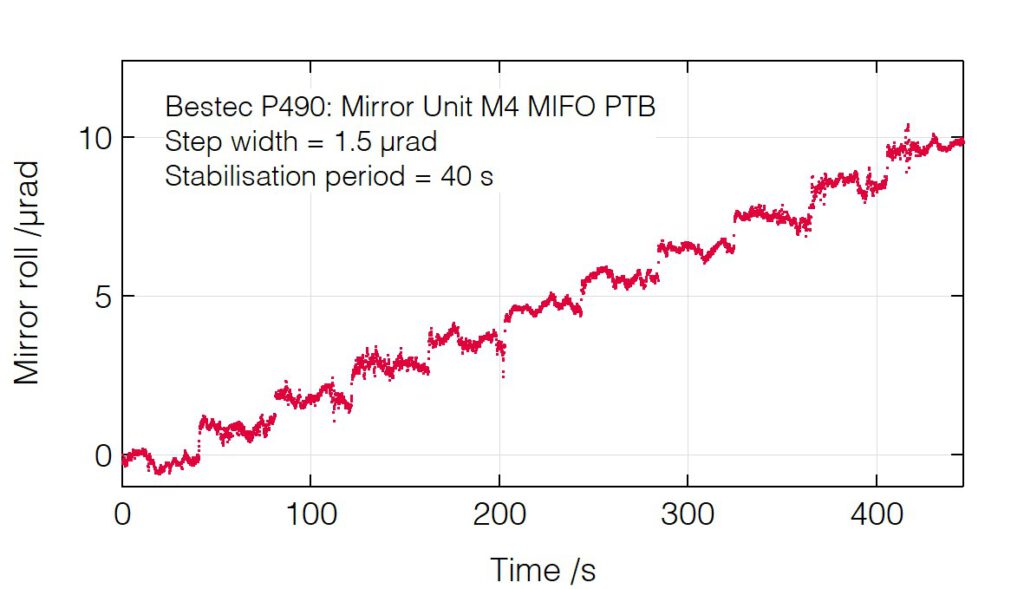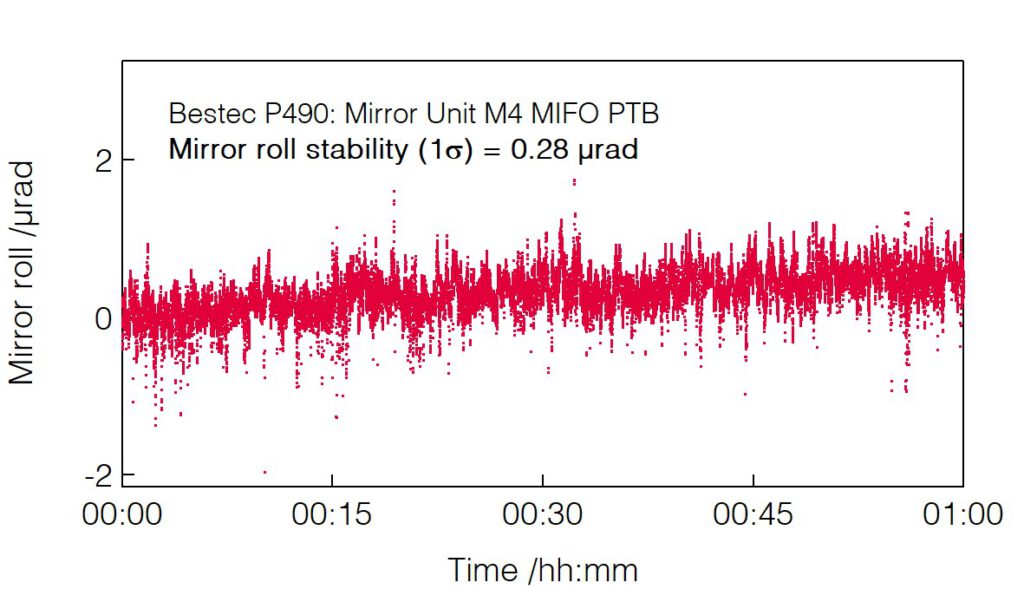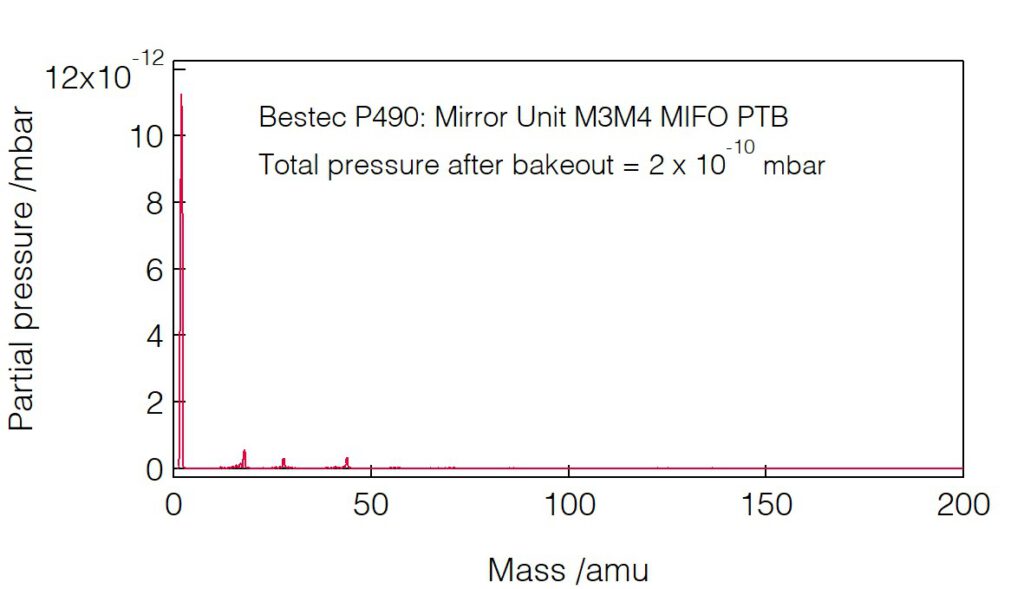
P490 – Mirror Unit M3M4 MIFO BESSY PTB
Application
Kirkpatrick-Baez mirror unit (M3M4) for soft X-ray synchrotron radiation
Year of delivery
2021
Installation site
MIFO beamline at National Metrology Institute (PTB) of Germany
The hexapod units for the MIFO beamline of the PTB at BESSY feature the lastest updates of the hexapod design for compact size, straightforward alignment and calibration at reliably excellent performance.
Design Features
-
Two constant-strut-length hexapod mechanisms.
- Six degrees of freedom and selectable rotation center for each mirror.
- Spectral range: 1.5 – 10 keV.
- Optical elements: two refocusing mirrors.
- Electrode at mirror surfaces for carbon contamination prevention.
- Temperature sensor at internal mechanics.
- Mechanically decoupled internal mechanics from the vacuum chamber.
- Internal mechanics directly connected to the adjustable support structure underneath.
-
EtherCAT based motion control system, synchronized encoder readout (suitable for on-the-fly measurements), software with server-client architecture, TCP-IP protocol, EPICS interface.
- Adjustable support structure.
- Permanently installed bakeout provisions.
Performance Features
- High positioning resolution (minimum incremental motion).
- High stability and repeatability for all degrees of freedom.
- Minimized mounting induced deformations.
Outer Dimensions
Technical specifications and performance values
General
Vacuum chamber
Chamber type
cylindrical (two vessels connected to each other), vertical axis
Main flanges
at the top
Material
1.4404 (C < 0.02%)
Base pressure
10-10 mbar range
Optical design parameters
Beam height
1378 mm
Number of mirrors
1 (M3)
1 (M4)
Surface shape
plane-elliptical
(M3 – reflects in vertical plane)
plane-elliptical
(M4 – reflects in horizontal plane)
Mirror dimensions
600 mm x 50 mm x 50 mm (M3)
360 mm x 50 mm x 50 mm (M4)
Actuator drives for hexapods axes
Resolution (design value)
0.00157 µm /motor fine step
(1/128, recommended)
0.001 µm /encoder count
Mirror mechanics (M3)
Pitch rotation
Range
± 2°
Resolution (calculated value)
0.039 µrad
Resolution (measured value)
0.50 µrad
Repeatability
0.22 µrad (pitch)
0.33 µrad (roll)
Long-term stability (1h)
0.42 µrad
Roll rotation
Range
± 2°
Resolution (calculated value)
0.38 µrad
Yaw rotation
Range
± 2°
Resolution (calculated value)
0.033 µrad
Resolution (measured value)
0.50 µrad
Repeatability
0.28 µrad (yaw)
0.32 µrad (pitch)
Long-term stability (1h)
0.20 µrad
Translation (meridional)
Range
± 20 mm
Resolution (calculated value)
10.8 nm
Translation (sagittal)
Range
± 5 mm
Resolution (calculated value)
13 nm
Repeatability
0.022 nm (translation)
Vertical translation
Range
± 2 mm
Resolution (calculated value)
1.56 nm
Repeatability
0.004 µm (translation)
Mirror mechanics (M4)
Pitch rotation
Range
± 2°
Resolution (calculated value)
0.034 µrad
Resolution (measured value)
1.50 µrad
Repeatability
0.33 µrad (pitch)
0.40 µrad (roll)
Long-term stability (1h)
0.30 µrad
Roll rotation
Range
± 2°
Resolution (calculated value)
3.30 µrad
Resolution (measured value)
1.50 µrad
Repeatability
0.36 µrad (pitch)
0.28 µrad (roll)
Long-term stability (1h)
0.28 µrad
Yaw rotation
Range
± 2°
Resolution (calculated value)
0.037 µrad
Translation (meridional)
Range
-15 mm to 10 mm
Resolution (calculated value)
12.6 nm
Repeatability
0.005 µm (translation)
Translation
along surface normal
Range
± 2 mm
Resolution (calculated value)
12.1 nm
Repeatability
0.044 µm (translation)
Translation (sagittal)
Range
± 5 mm
Resolution (calculated value)
1.56 nm
Repeatability
0.024 µm (translation)



